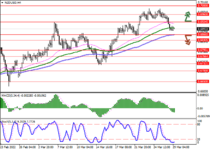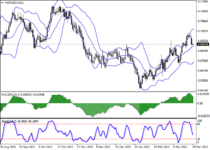SOLIDECN
Senior member
- Messages
- 3,041
- Likes
- 0
GBPUSD, the market is waiting for the decision of the Bank of England
The UK currency is in the stage of a local upward correction in anticipation of the decision of the Bank of England on the interest rate, which will be taken today at 14:00 (GMT+2). Now the GBPUSD pair is trading around 1.3156.
The vast majority of currency market analysts assume that the regulator will raise the interest rate for the third time by 25 basis points and bring it to 0.75% amid rising inflation and a negative situation on the national labor market. Official macroeconomic statistics showed the highest increase in consumer prices since 1992, which amounted to 5.5% for January compared to the same period in 2021. The volume of asset buybacks is projected at the same level of 875B pounds. According to analysts, today's possible increase in the rate is only one of the stages of a large-scale program, under which the rate could be increased to 1.50% by the end of 2022.
As for the US dollar, all the expectations of investors and analysts have completely justified: the US Federal Reserve raised the interest rate from 0.25% to 0.50%, but this had almost no effect on the dollar quotes. Moreover, the US currency fell slightly and is now trading around 98.300 points in the index. In an accompanying statement, the regulator noted that due to the military conflict in Ukraine, inflation would be difficult to contain, and soon the figure may increase again. Despite this, the US financial authorities intend to continue to influence inflationary pressures by raising rates, which will eventually lead to achieving the target value of 2%.
Resistance levels: 1.3266, 1.36.
Support levels: 1.2997, 1.28.
The vast majority of currency market analysts assume that the regulator will raise the interest rate for the third time by 25 basis points and bring it to 0.75% amid rising inflation and a negative situation on the national labor market. Official macroeconomic statistics showed the highest increase in consumer prices since 1992, which amounted to 5.5% for January compared to the same period in 2021. The volume of asset buybacks is projected at the same level of 875B pounds. According to analysts, today's possible increase in the rate is only one of the stages of a large-scale program, under which the rate could be increased to 1.50% by the end of 2022.
As for the US dollar, all the expectations of investors and analysts have completely justified: the US Federal Reserve raised the interest rate from 0.25% to 0.50%, but this had almost no effect on the dollar quotes. Moreover, the US currency fell slightly and is now trading around 98.300 points in the index. In an accompanying statement, the regulator noted that due to the military conflict in Ukraine, inflation would be difficult to contain, and soon the figure may increase again. Despite this, the US financial authorities intend to continue to influence inflationary pressures by raising rates, which will eventually lead to achieving the target value of 2%.
Resistance levels: 1.3266, 1.36.
Support levels: 1.2997, 1.28.


